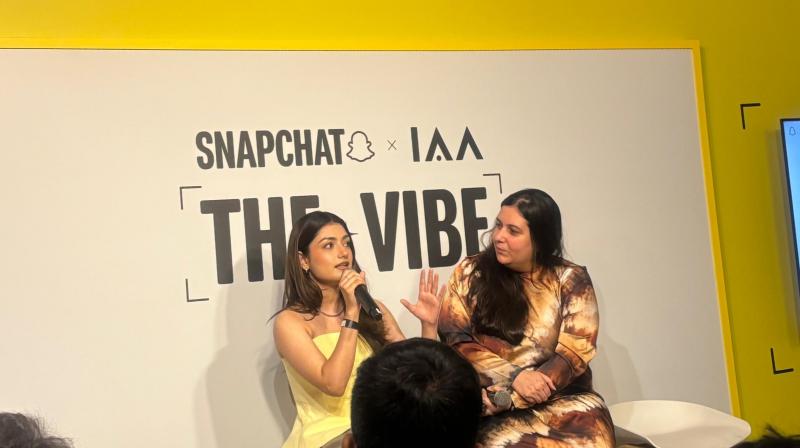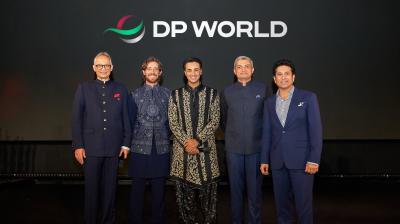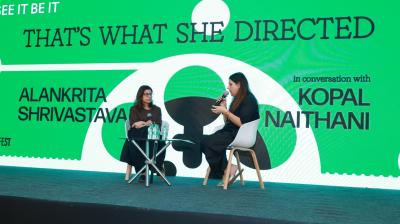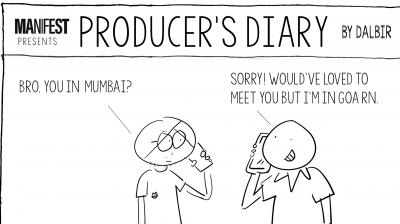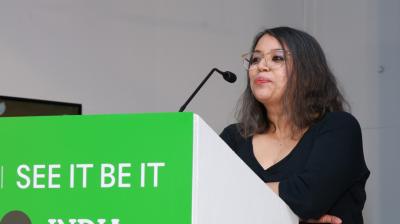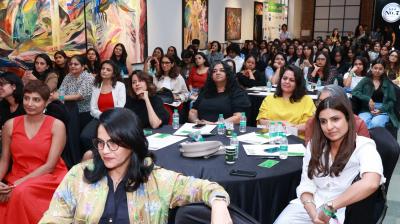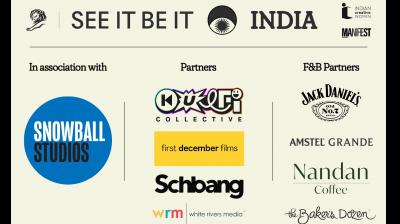Today’s rapidly shifting marketing ecosystem is forcing brands to rethink consumer engagement. Picture-perfect, heavily scripted campaigns that dominated the last decade no longer resonate with Gen Z, the digitally native and 'brand-skeptical' generation.
So what is it that works with this cohort?
To decode what genuinely resonates with Gen Z, Snapchat brought creator, Amulya Rattan, for a fireside chat hosted by IAA (Indian Advertising Association).
Rattan shared her journey as a lifestyle influencer – scaling from 30,000 to 90,00,000 followers across platforms Snapchat, YouTube, and Instagram at the age of 21- emphasising the value of organic content over scripted promotions.
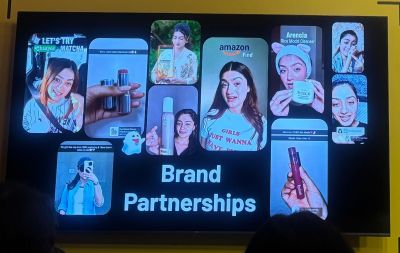
She highlighted the significance of short-form videos and the need for brands to provide creators with freedom, and the importance of maintaining transparency with audiences, even in paid partnerships.
The conversation underscored the significance of creators in shaping brand content and consumer engagement, particularly among the younger generation.
What does Gen Z want?
Rattan spotlighted three non-negotiable factors that are critical for Gen Z when engaging with brands: authenticity, brand story, and relatability. According to her, one of the biggest mistakes brands make is assuming Gen Z can be sold in the same way as previous generations. “Today’s audiences are smart—they can figure out what’s scripted,” she said.
“The content must mirror their lives and concerns. If I am selling this product, what was the journey of that particular product? How was it made? Because a brand is not built overnight. They are interested to know the whys and the hows behind a product or brand,” she shared, highlighting the need for brands to feel 'real' and 'genuine.' "I would love to know, for instance, how a small cafe grew into a multi-millionaire business."
She also revealed that she would refuse to endorse a brand if her audience does not relate to it, “I would say no to that brand, in fact, I am doing that currently. Because I have been creating content since middle school, and my audience has grown with me, and now I'm past college, so all of us have the same kind of skin concerns and life concerns.” This demands a fundamental shift in brand approach, she pointed out while stating marketers must stop trying to sell to Gen Z and start focusing on storytelling.
Yes to freedom, no to scripts
Another impactful piece of advice Rattan offered to brands is to stop treating creators like actors reading a script and start treating them as trusted partners. “At the end of the day, we are creators, not actors. Not just me, but all of the creators these days, say no to ‘scripting’. Rather, we prefer to promote a product organically. But I feel like that is missing,” she rued.
She cited her best brand collaborations as the ones where she was given complete autonomy to create or promote the product in whichever way she wanted, without being scripted. Rattan explained that when brands insist on a script, the resulting video often looks "like a TVC and not our own real content," which could be a turn-off for her audience.
Recounting from her experience, she said that a creator knows his/her follower base best - their interests and their life concerns - having grown up together over a period of time. A brand must respect this know-how. Rattan exemplifies this by refusing partnerships that don't fit her audience profile.
“Giving freedom to the creator matters a lot, because they know their audiences better - It's not just about views. A brand should try to understand the kind of audience that we are tapping into - the kind of audience that the creator has. One cannot sell products to teens that work for folks who are in their mid-twenties or 30s. Obviously, that won't work.”
Sharing a case in point, she narrated, “Initially, when I started my creator journey, I was quite excited at that time and had promoted a brand. But when I used that product, my skin reacted in a way it had never before. We talked to the brand, and we immediately took down the video. So that is one thing I think brands should keep in mind.”
Brands must understand that a creator's value is not just their follower count, but the depth and relevance of their audience, she stressed. “My community comprises mostly teenagers. So, I cannot sell retinol to them, right?”
Decoding Gen Z
Rattan revealed that she often reviews products on Snapchat, even if the paid content appears on another platform - it is where her most honest interactions happen. Her followers message her directly, asking if something ‘actually works.’ This feedback loop is genuine, raw, and deeply trust-driven.
“They expect honesty and they get it,” she said, sharing that she never hesitates to shout out when something is an 'ad.'
“Disclosing a paid partnership doesn’t hurt - it reinforces authenticity,” she added. This helps with navigating content regulations such as those prescribed by the advertising industry watchdog ASCI, while maintaining audience trust.
Editing is the new ‘hook’
With attention spans shrinking, Rattan emphasised that clever editing is the real differentiator in short-form video. Aesthetic is no longer about filters or perfection but about energy, camera angles, and creative cuts.
Explaining the importance of creative editing and concise content, she said, “Aesthetics is one thing, but over the period of time, most of our attention spans have been reduced a lot. So edits matter a lot because we don't want to watch a video that is two minutes long and the person is saying the same thing. Rather, if you show it creatively, like inserting cuts, shooting from different angles, speaking in a different way - all that matters a lot. And when you put it all together, it becomes aesthetic. So the editing itself is the aesthetic. "
Building a brand that lasts
Finally, Rattan's advice extends to brand builders themselves. To resonate with Gen Z, a brand must behave like a creator - showcasing the unfiltered reality of its business journey.
She emphasised that it's important to show every part of the journey – the testing of your products, the inventory checks – everything, including the bloopers and failures. “Me and my fellow creators who have created our own brands, are doing the same thing - showcasing our journey, how we started, and what work we personally do."
“Relatability matters a lot,” she added. “A creator is a brand, and a brand is a creator now.” The more imperfect, human, and transparent a brand feels, the more trust it earns.
When does a brief feel ‘right’
When brands approach creators, Rattan says they are often ‘rigid’ and obsess over aesthetic ideals, such as perfect backgrounds, perfect outfits, and even flawless hair. But Gen Z doesn’t care about any of that.
“Audiences won't notice what I'm wearing or how my hair is looking. Rather, they will focus more on what I'm saying about the product- the review matters a lot,” she pointed out.
For her, a strong brief balances expectations with freedom, taking into account a creator’s mass appeal and awareness about their audience.
The bottom line: authenticity is Gen Z currency
The session also delved into how, with 75% of the world’s Gen Z and 90% of India’s Gen Z on Snapchat, brands cannot afford to misunderstand this audience. The cohort’s spending is only set to triple in the next decade, making it an essential component of the brand’s marketing playbook, as we go into a creator-led economy.
To sum up, the key takeaways from the session are: Authenticity is essential for Gen Z engagement, creators need freedom to tell real stories, and brands succeed when they prioritize honesty, relevance, and transparency. These principles allow for true connections between brands, creators, and Gen Z audiences.

